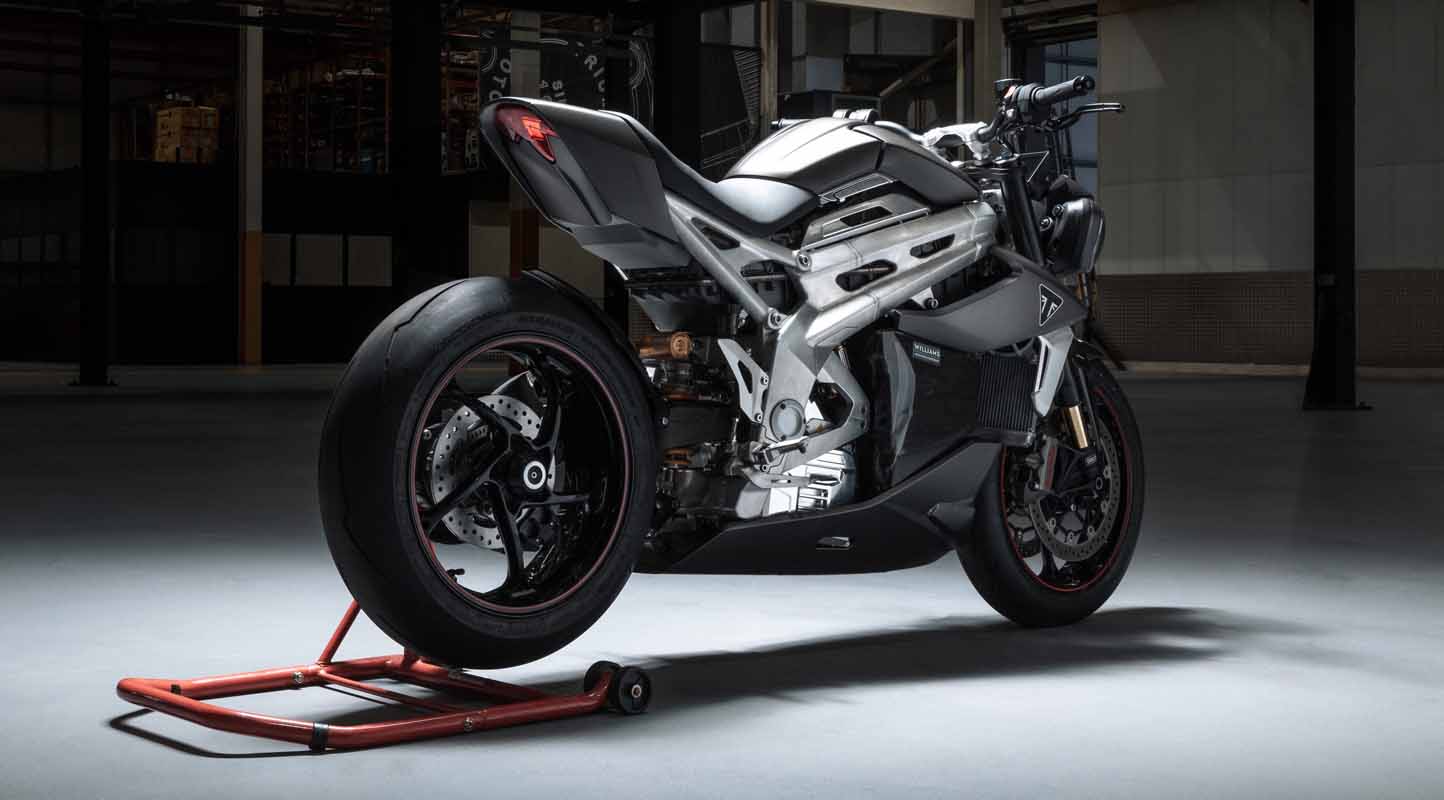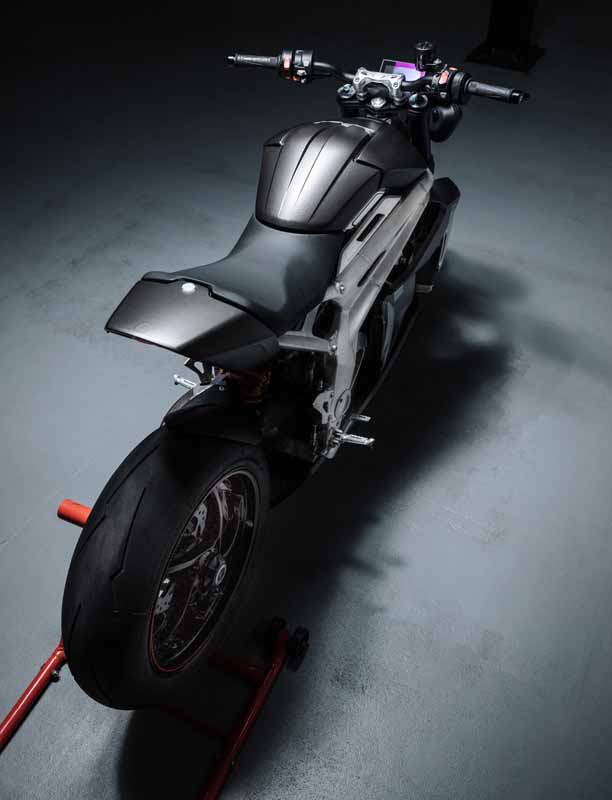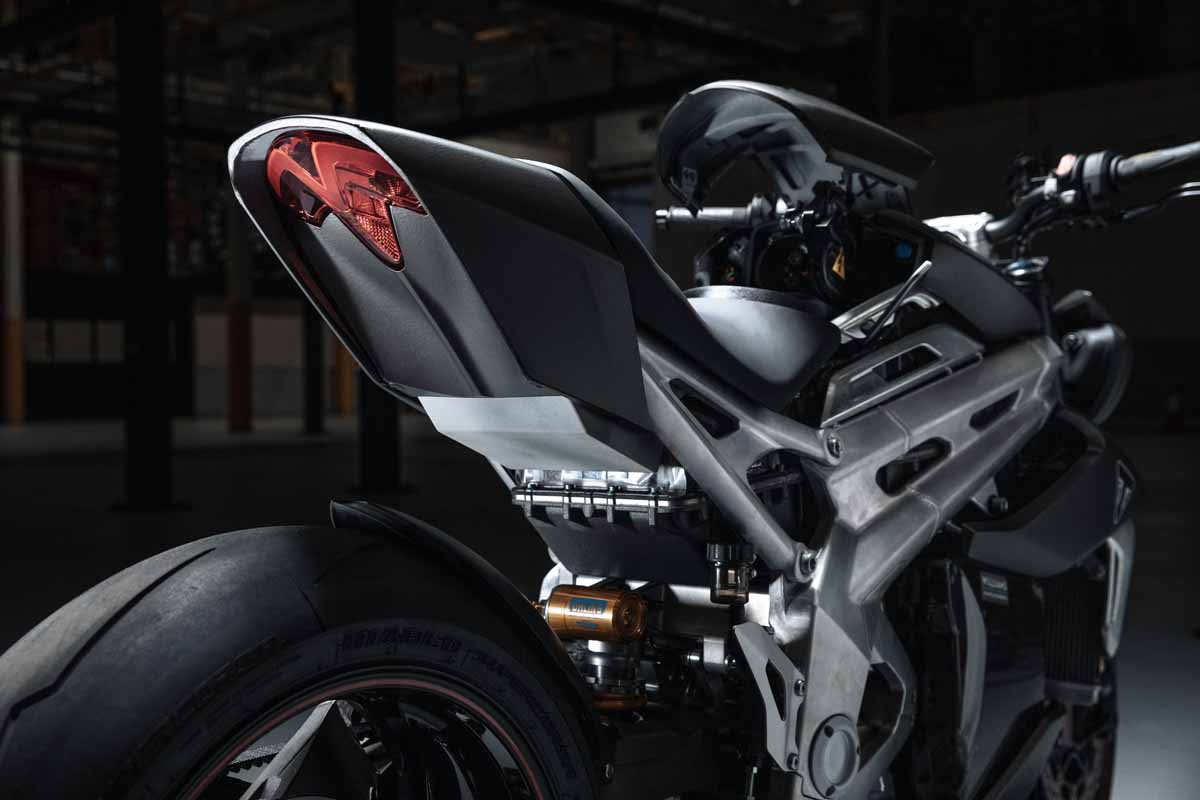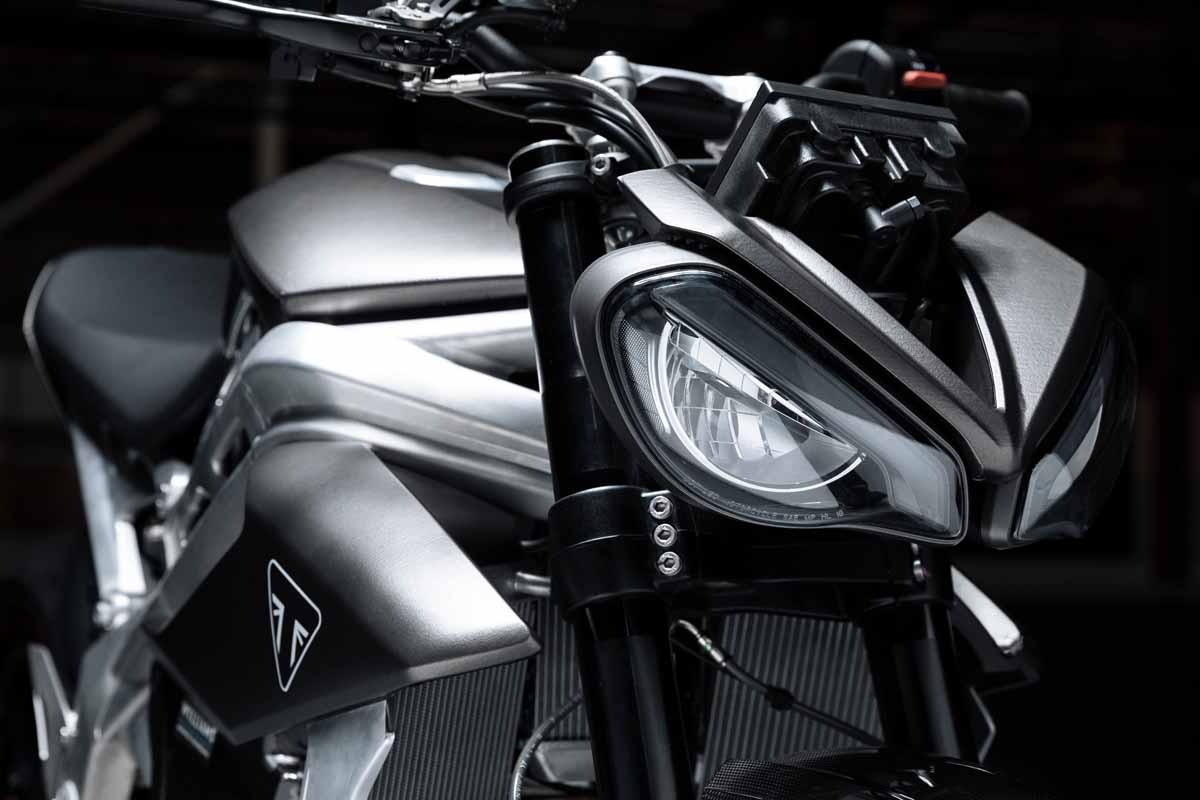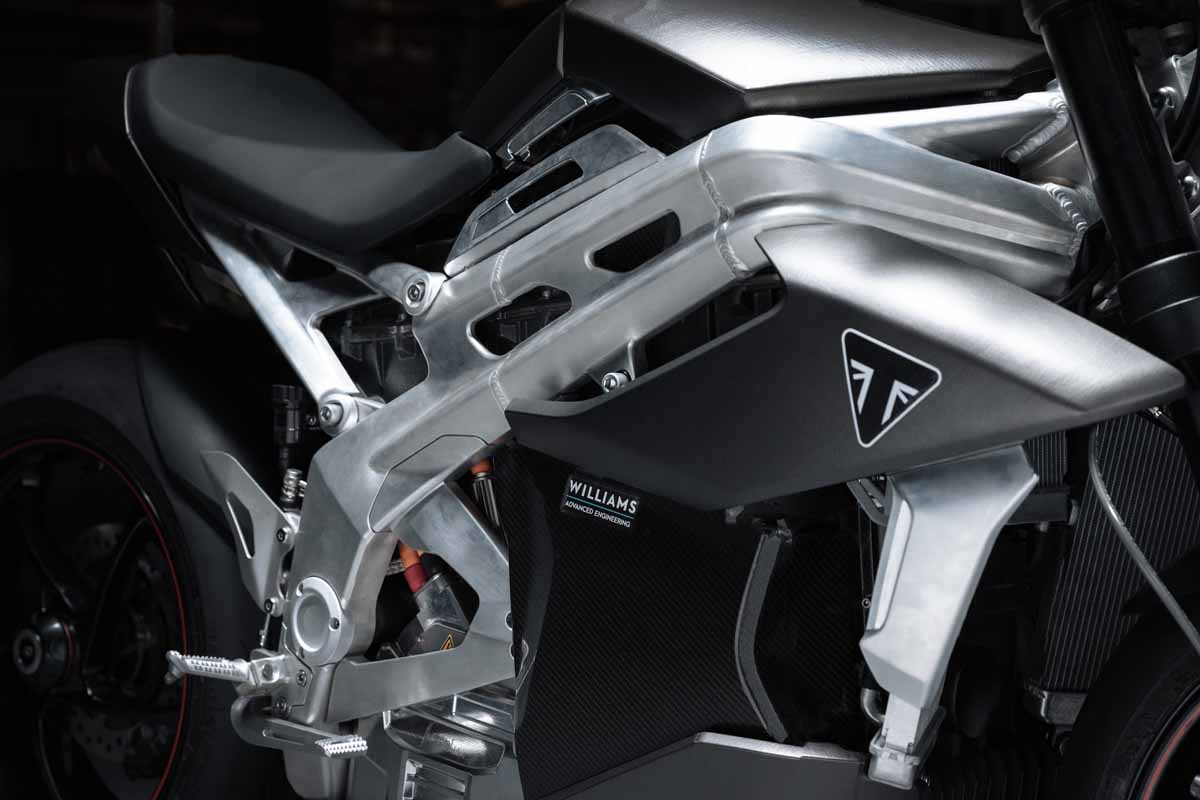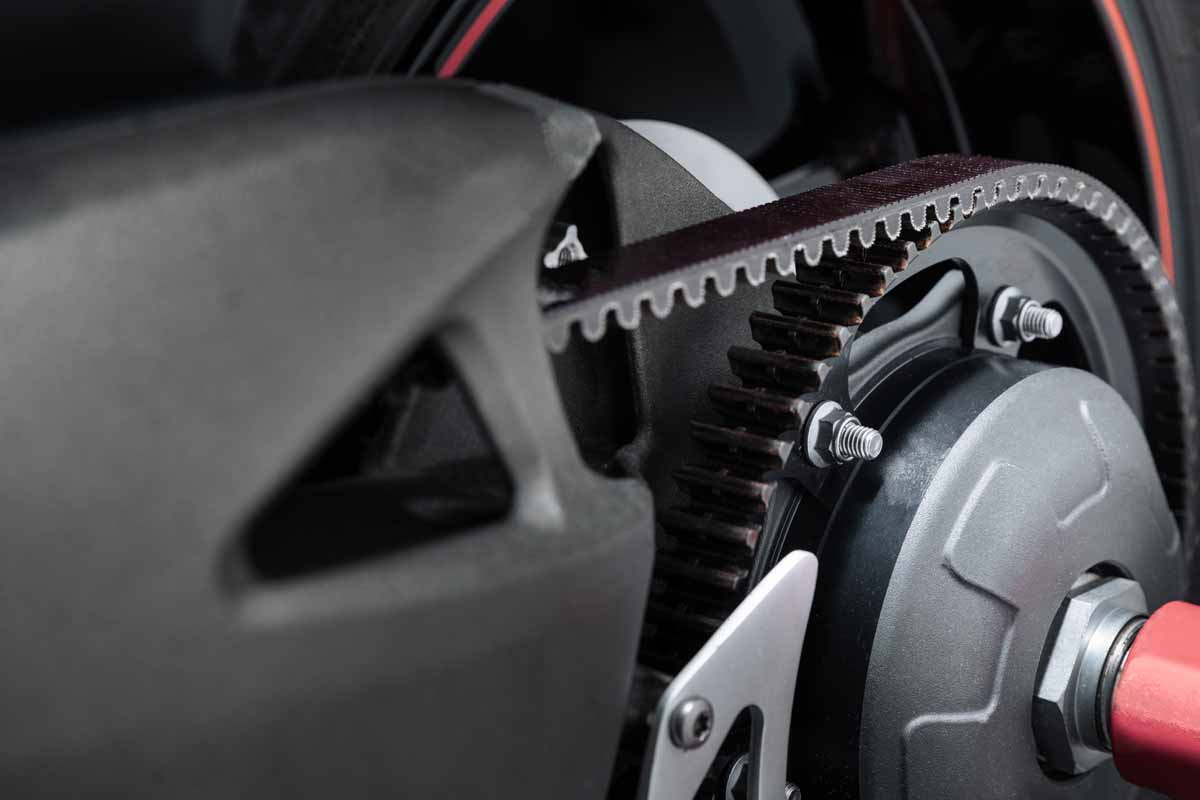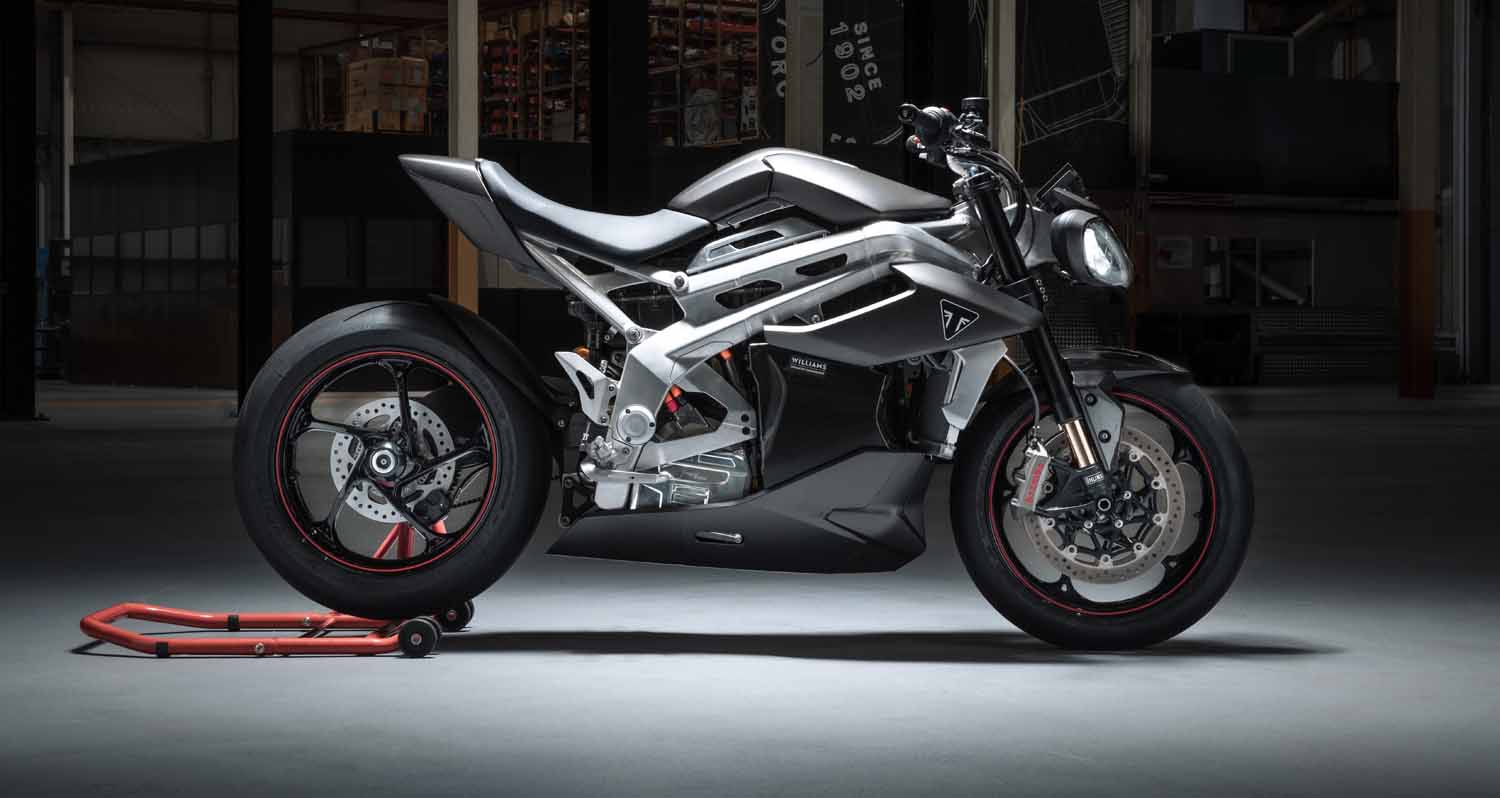
Project Triumph TE-1 has today been revealed in completed prototype form. The unique collaboration between Triumph Motorcycles, Williams Advanced Engineering (WAE), Integral Powertrain Ltd, and WMG at the University of Warwick funded by the Office for Zero Emission Vehicles through Innovate UK, was set up to create ground-breaking developments in specialist electric motorcycle engineering and innovative integrated technology design.
Marking the official end of the collaboration stage of the TE-1 project, the completed demonstrator is now fully ready for the next Triumph-led stage of the project to begin – the live testing programme – integrating for the first time all of the latest and final innovations from the project partner workstreams.
The WAE battery pack incorporates dedicated cell packaging for optimum centre of gravity, vehicle control unit, DCDC converter, integrated cooling, charge port, and styled carbon covers. This all-new WAE-developed powertrain will set new standards for electric bike performance, with class-leading power, efficiency, charging time and range.
Wholly responsible for TE-1’s lightweight, ground-breaking battery system, WAE has employed a holistic approach to development which will allow riders to use more electric power for longer, providing access to outstanding performance regardless of battery charge, alongside rapid charging times.
The all-new battery has peak power of 170kW and continuous power of 90kW, with a capacity of 15kWh. This enables the motorbike to deliver 130kW of peak power and 80kW of continuous power. Class leading system cooling combined with the optimum balance of power and energy means TE-1 can give the rider more electric power for longer and deliver outstanding performance regardless of battery charge. The 360-volt system also enables a fast-charging time of under 20mins (0-80%), which is combined with a market leading target range.
WAE has optimised the battery module layout to balance mass and positioning within the prototype chassis taking into consideration centre of gravity, space and relationship with the powertrain and charging approach. A new and bespoke vehicle control unit has been integrated into the battery pack to minimise weight and packaging.
Key project achievements during this phase include test results that exceed current benchmarks and targets set by the UK Automotive Council for 2025, providing a platform with great potential for future development in electric motorcycle performance.
The overall objective of the TE-1 project has been focused on developing electric motorcycle capability, in order to provide an input into Triumph’s future electric motorcycle offering, driving innovation, capability, and new intellectual property, and enhancing the credibility and profile of British industry and design.
With the completion of the prototype demonstrator, the full live testing phase of the TE-1 project will now begin. Over the next six months the prototype demonstrator will undertake an extensive live testing programme within Triumph’s state-of-the-art facilities, including rolling road and track testing, designed to provide direction into the final set up and calibration of the prototype demonstrator.
At the completion of the live testing phase, estimated to be Summer 2022, the prototype demonstrator will be updated with its final body panels in readiness for active track demonstration. At this time, final specifications and testing outcomes will be published, as well as insights and key facts on how the TE-1 delivers on the project targets including final battery and range performance.
“It has been truly exciting to see the progress made during phase 3 of Project Triumph TE‑1 with the final prototype motorcycle now going into real life testing. Everyone involved at Triumph is proud to have been part of this innovative British collaboration. Personally, I am thrilled with the results we have already achieved with our partners, and the exciting preview of the potential electric future to come.” said Nick Bloor, Triumph CEO. “We look forward to continuing the ambitious and innovative work on the TE-1 demonstrator prototype through the live testing phase and sharing the outcome with Triumph fans across the world.”
Following completion of Phase 2 of the programme in March 2021, which delivered a fully bench tested battery, WAE has now concluded work on Phase 3 which contained some critical gateways for the project. In addition to supporting a number of hardware and software solutions; specifically integrating Triumph’s motorcycle control software to work in harmony with WAE’s controller and battery management system, the team has enhanced the integration of the mechanical and electrical solutions; optimising battery layout to balance mass and positioning within the chassis.
The demonstrator bike is now undergoing final battery level validation and calibration to ensure the performance results meet best-in-class power and energy density targets and for the rider, ensuring there is no compromise in performance at low levels of charge.
“Following an extended period of testing, we are thrilled to finally see the results of our work on a physical bike. By working with the team at Triumph, we have continued to push the boundaries of battery technology, keeping the rider in mind at all times” said Dyrr Ardash, Head of Strategic Partnerships, Williams Advanced Engineering. “Because we have designed the battery from the ground-up, design has not been compromised and we have been able to maximise the potential of cutting edge technology, offering both performance and all important, range”.

